SAN ANTONIO – It’s a 130-year-old tradition that’s as San Antonio as it gets. And prior to last year, Fiesta had only been canceled during World Wars I and II.
That’s why, for many San Antonians, the postponement of Fiesta last March drove home the threat COVID-19 posed to our community.
Fiesta didn’t end up happening at all in 2020. But it is happening in 2021. And while things won’t look exactly the way they did in 2019, a lot of the traditions that we look forward to year after year will be going strong.
Because we have a Fiesta to look forward to this year, we’re taking a look at the history behind the most popular Fiesta traditions. (Watch the full episode in the video player above.)
SMART. IN-DEPTH. LOCAL: Click here for more episodes of KSAT Explains
When did San Antonio start celebrating Fiesta?
It all started with the Battle of Flowers Parade.
In 1891, a group of women came together with a plan to honor those who fought on behalf of Texas during the battles at the Alamo and San Jacinto.
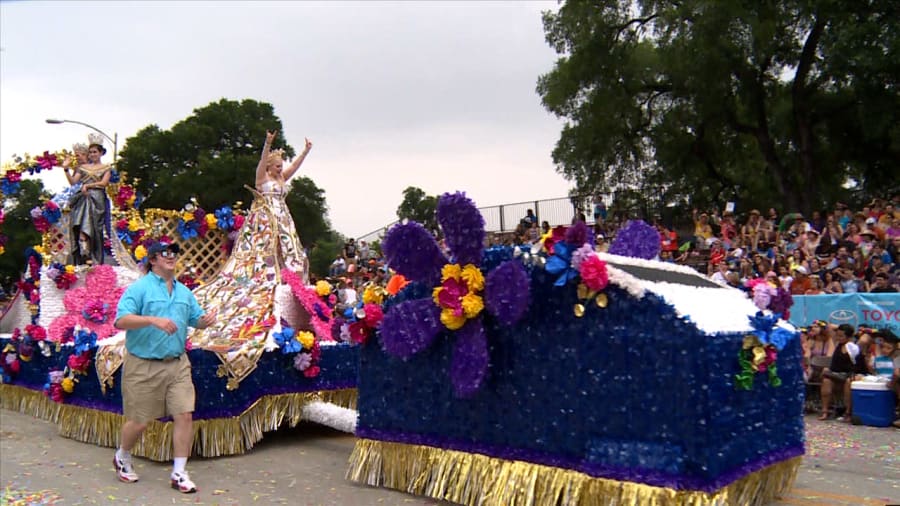
The Fiesta Commission describes that first Battle of Flowers parade as horse-drawn carriages, bicycles decorated with fresh flowers and floats carrying children dressed as flowers.
It was an immediate success. So then, it became a party. And as the years passed, more events were added.
“Those events began to grow around that parade and it got bigger and bigger,” said Baltazar Serna, the president of the Fiesta Commission.
Today, the parade is the largest of Fiesta. In fact, it’s one of the largest parades in the country. And it still pays homage to the fighters of those famous Texas battles. The parade route starts right in front of the Alamo.
The event is the only one of its kind put on by all-women, who are all volunteers.
Why is royalty involved?
And then came Royalty. At least as far as Fiesta is concerned.
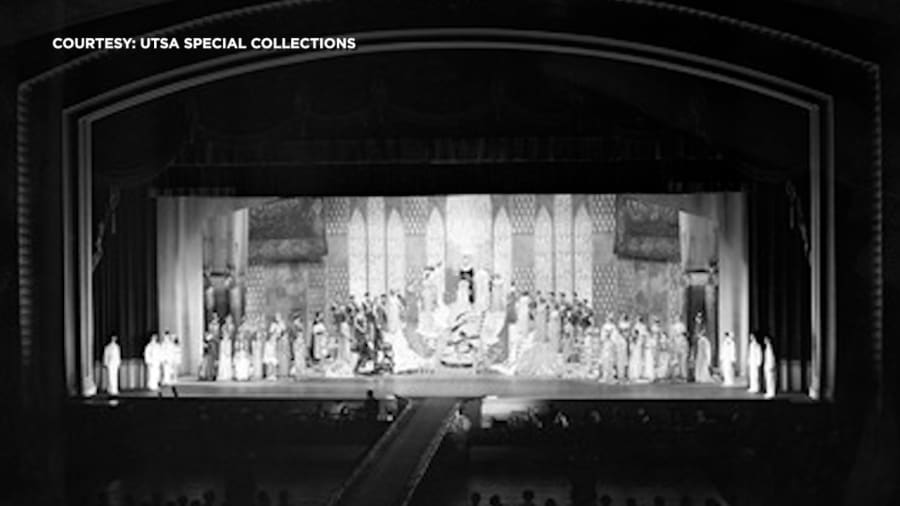
The idea of unofficial royalty in San Antonio actually pre-dates Fiesta. Prior to 1891, local businessmen would hold a spring carnival. At that carnival, they would crown kings and queens.
Those early kings were given some creative names. Like King Selamat -- that’s tamales spelled backward. Or Omala -- Alamo spelled backward.
But the oldest unofficial royal with ties to Fiesta is the queen crowned by The Order of the Alamo. The organization was founded in 1909.
“There are other queens that predate The Order of the Alamo,” said Amy Fulkerson, Chief Curator at The Witte Museum. “But this was the first time that they said this is the queen specifically for Fiesta.”
The Order of the Alamo selects a queen and her court each year. That includes a princess and 24 duchesses -- 12 from in town and 12 from out of town. Their gowns are elaborate and often display a theme.
“We’ve got an incredible industry here in San Antonio of these couture dressmaker’s that many people don’t know about,” Fulkerson said. “Their skills and technique, along with the materials that they’re using, have really elevated this to a true art form.”

In 1926 the Texas Cavaliers came along. Today they’re a civic organization, dedicated to raising money for children’s charities. But they started out as a social club. The group crowned the first King Antonio to preside over Fiesta in 1927.
Not sure who the Cavaliers are? You probably would recognize their distinct blue and red uniforms.
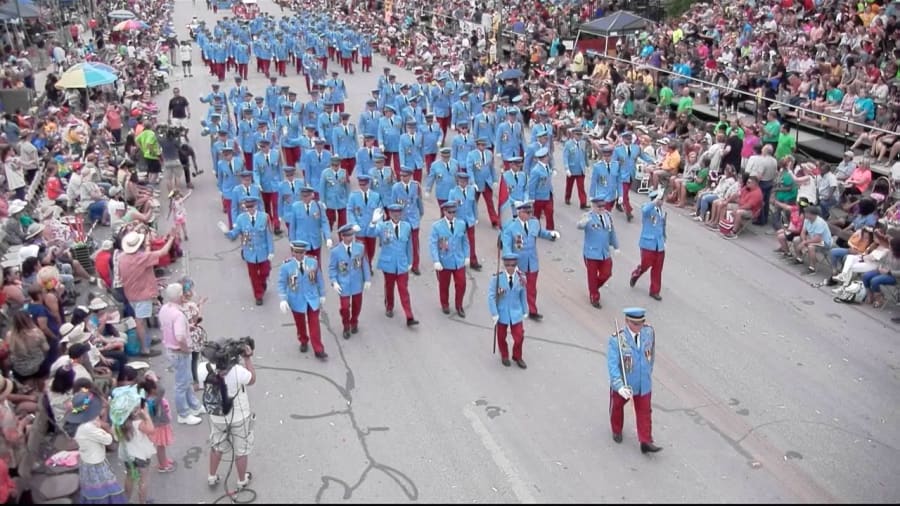
And then there’s el Rey Feo -- the Ugly King.
The origins of this tradition date back to Spanish medieval times. According to the Rey Feo Scholarship Foundation, the common people resented the King of Spain for distancing himself from his subjects. So they started their own celebration in which they named a fellow commoner el Rey Feo.
“The King of Spain would have his events and the peasants out in the streets would have their own celebration,” said Serna.
The tradition was adopted in Mexico. And in 1947, members of the League of United Latin American Citizens Council decided to bring the celebration here to San Antonio to raise money for underprivileged children. In 1980, el Rey Feo was formally invited to be part of Fiesta.
Serna, the president of the Fiesta Commission, served as el Rey Feo in 2010.
“It was great to have my mom there and my family there watching me,” Serna said. “It was something I’m still proud of.”
Today there are nine members of the official Fiesta royalty.
“That doesn’t mean we don’t have other Fiesta royalty,” Fulkerson said. “They’re just not recognized in terms of being represented at all of the events.”
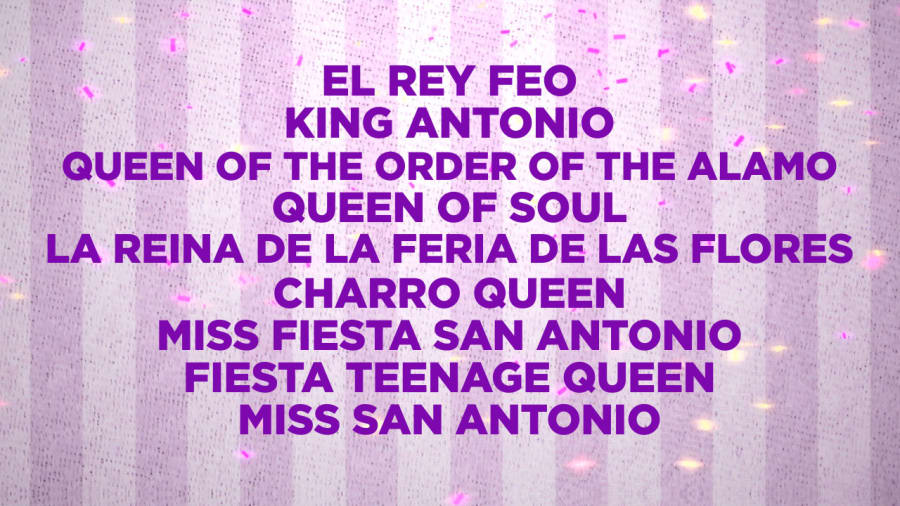
Each king and queen serve one year, with the duties of supporting charitable organizations that benefit San Antonio.
When were the other parades added to the Fiesta line-up?
We’ve already covered the origins of the Battle of Flowers parade. But how did the River Parade and Fiesta Flambeau get started?
The Texas Cavaliers kicked off the first-ever River Parade in 1941, after some in the organization traveled to Mexico and saw the beautifully decorated barges in Xochimilco, the so-called Floating Gardens of Mexico City. They brought the idea back home, and it coincided with a restoration project along the San Antonio River.
Seven years later, in 1948, Fiesta Flambeau was born. Reynolds Andricks, known as a Fiesta entrepreneur, came up with the idea. He used the night parades of Mardi Gras in New Orleans as his inspiration. In the early days, torch brigades were used to light the night. Groups of men carried five-foot poles with flares attached.
Fiesta Flambeau has certainly come a long way. It’s now known as America’s largest illuminated night parade.
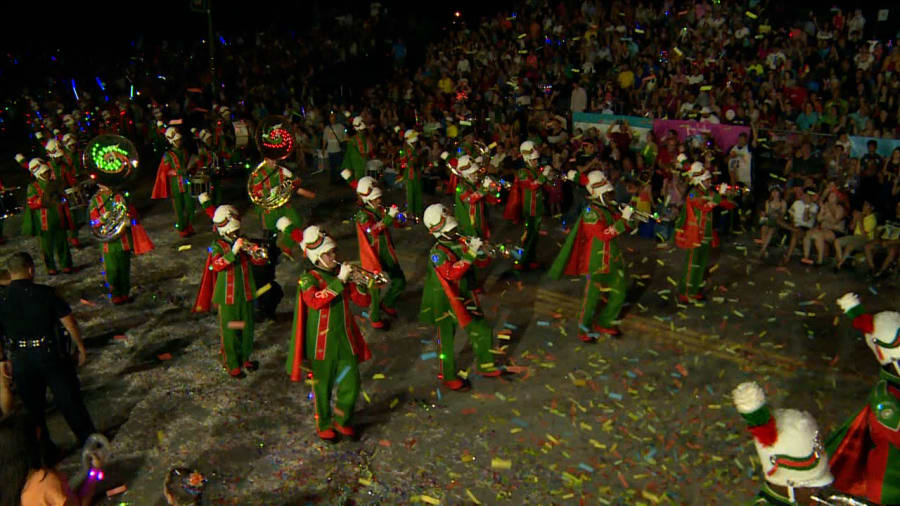
What’s the right way to pronounce “NIOSA”?
A Night in Old San Antonio, or NIOSA, is one of Fiesta’s most popular events. But when it started, it wasn’t even a part of Fiesta.
The Conservation Society of San Antonio held its first one-night street fair in 1938. The event went by a few different names in the beginning, but in 1946 the City asked the Conservation Society to make the event officially part of Fiesta.
Today, it’s a four-night festival in the heart of downtown that raises roughly $1 million for the Conservation Society.
As for the right way to pronounce the acronym, Fiesta Commission of San Antonio President Patti Zaiontz says it with a long E sound, as opposed to a long I sound (think nee-oh-suh instead of nye-oh-suh). But ultimately how you say it isn’t all that important to her.
“We just want you to come,” Zaiontz said. “You can say it however you want to.”
How much food is consumed during Fiesta?
Obviously a huge draw to any Fiesta event is the food. So how much food does San Antonio typically consume during Fiesta?
According to the Fiesta Commission:
- 15,000 oysters at Oyster Bake
- 32,000 chicken-on-a-sticks
- 25,000 tortillas
- 5,000 tamales
- 3,000 turkey legs
Here’s what the Conservation Society says the NIOSA crowd consumes during an average year:
- 17,000 pounds of beef
- 11,000 pounds of chicken
- 3,000 turkey legs
- 1,000 pounds of guacamole

What’s the purpose of this party?
It isn’t called the party with a purpose for nothing.
In between those big parades, there are several events that benefit nonprofits with various causes throughout our city. Fiesta is often the biggest fundraiser of the year for some of those organizations.
“Fiesta has evolved into a 10-day event with 115 Participating Member Organizations,” Serna said.
All of those organizations are 501(c)(3) nonprofits, raising money for causes like Alzheimer’s research, protecting animals and so many causes in between.
“Fiesta is probably the most prolific event for nonprofits in the world,” Zaiontz said.
So how can a nonprofit join the fun?
Nonprofits must apply to the Fiesta Commission to become a Participating Member Organization, or PMO, of Fiesta. The Commission evaluates an event over three years. If, after those three years, the Fiesta Commission signs off on a group’s participation, that group’s event becomes an official Fiesta event.
Organizations have to go through a yearly accreditation process where they let the Commission know what their budget is, projected revenue and the intended purpose of their nonprofit.
The Fiesta Commission verifies that money raised is being put to good use by checking tax records. Every year, organizations file an IRS Form 990 to show where their money is going.

Zaiontz says the money raised during NIOSA helps the Conservation Society keep San Antonio a world-class city for locals and tourists alike.
“A Night in Old San Antonio (NIOSA) is the largest event for a nonprofit that specializes in preservation in the world,” she said. “It’s not just buildings. It’s the cultural heritage. It’s the things that make San Antonio unique for all the many visitors that come here.”
What’s with all the Fiesta medals?
For many San Antonians, these shiny trinkets are the heart of Fiesta. They can be bought, traded and worn.
But when did the practice of giving out medals first start?
The history can be traced to 1946, when King Antonio started giving coins to children at events.
In 1971, King Antonio XLIX, Charles Orsinger, handed out what is now considered to be the first official Fiesta medal. Before that, only Fiesta royalty wore the medals. But once introduced to the general public, they quickly exploded in popularity.
Watch the video below to learn more about how Fiesta medals have evolved into a creative artform over the years:
More Fiesta 2021 information:




